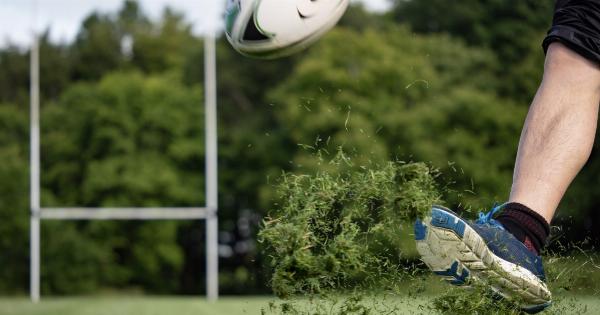When it comes to choosing footwear, we often prioritize style and fashion over comfort and functionality.
While it’s understandable to want to look good, it is crucial to keep in mind the potential harm that certain shoes can cause to our feet and legs. Some shoe styles may seem innocent and trendy, but they can gradually lead to serious leg problems. In this article, we will discuss ten leg-destroying shoes that you should avoid at all costs.
1. High heels
High heels are undoubtedly one of the most popular shoe styles among women. They not only elevate your height but also add a touch of sophistication to your attire. However, wearing high heels for prolonged periods can be detrimental to your leg health.
The elevated heel puts excessive pressure on the forefoot, leading to a condition called “Metatarsalgia.” It can cause pain, inflammation, and even stress fractures. Additionally, high heels disrupt the natural alignment of the body, leading to issues with the ankles, knees, and back.
2. Pointy-toed shoes
Pointy-toed shoes may look elegant and sleek, but they can wreak havoc on your feet. These shoes squeeze the toes together, increasing the risk of bunions, corns, and ingrown toenails.
The narrow toe box also limits the natural movement of the toes, leading to discomfort and foot deformities. Continuous wear of pointy-toed shoes can cause nerve compression, leading to conditions such as Morton’s neuroma.
3. Ill-fitting shoes
We often compromise on the fit of our shoes for the sake of style. However, wearing ill-fitting shoes is a recipe for leg disaster. Shoes that are too tight can lead to blisters, calluses, and even nerve impingements.
On the other hand, loose shoes can result in instability, causing ankle sprains and other injuries. Always ensure that your shoes provide ample room for your toes and offer proper arch support to minimize the risk of leg problems.
4. Flip-flops
Flip-flops are a popular choice for warmer weather, thanks to their easy slip-on style and breathability. However, these flimsy sandals don’t offer any support for the feet.
They provide no arch support, minimal shock absorption, and inadequate protection for the toes. Wearing flip-flops for extended periods can lead to plantar fasciitis, Achilles tendonitis, and even stress fractures in the foot.
5. Platform shoes
Platform shoes have made a comeback in recent years, with many considering them a stylish and trendy footwear option. While the added height may seem appealing, these shoes can put excessive strain on the ankles, calves, and knees.
The elevated platform alters your natural gait, leading to instability and increased risk of falls. Prolonged wear of platform shoes can also lead to muscle imbalances and chronic pain in the legs.
6. Stilettos
Similar to high heels, stilettos are notorious for their potential harm to leg health. These ultra-thin, high-heeled shoes place immense pressure on the balls of the feet, leading to metatarsal pain and stress fractures.
The lack of stability in stilettos can also cause ankle sprains and contribute to the development of conditions like hammertoes and plantar fasciitis. Limit the use of stilettos to special occasions to minimize the risk of leg damage.
7. Ballet flats
Ballet flats are often perceived as a comfortable and practical option for everyday wear. However, these shoes lack proper arch support and cushioning, which can lead to foot and leg pain over time.
The lack of shock absorption can contribute to conditions like shin splints and stress fractures. If you prefer flats, choose ones with added support or consider using orthotic inserts for better shock absorption and arch support.
8. Wedges
While wedges are considered a more stable alternative to stilettos, they can still pose risks to leg health. The angle of the wedge can place excessive pressure on the heel and ball of the foot, leading to pain and discomfort.
Wearing wedges that are too high can also disrupt natural knee alignment, potentially causing knee pain and muscle imbalances. Opt for lower, more supportive wedges if you enjoy the style.
9. Backless shoes
Backless shoes, such as mules and slides, may be easy to slip on, but they can cause significant damage to your legs. These shoes often lack proper support around the heel, leading to instability and an increased risk of ankle sprains.
The constant effort of gripping your feet to keep the shoes on can also overwork the calf muscles and contribute to muscle strains. If you prefer backless shoes, ensure they have a snug fit and proper support around the heel area.
10. Sneakers with improper support
Sneakers are typically considered a safe and comfortable choice, but not all sneakers are created equal. Wearing sneakers without proper arch support and cushioning can lead to foot and leg pain.
It is important to choose sneakers that are designed for your specific foot type and physical activities. Investing in supportive athletic shoes that offer shock absorption and stability can help prevent leg and foot injuries.
Remember, the health of your feet and legs should always be a priority when selecting footwear. While it’s alright to wear certain shoes on occasion or for short periods, it is important to choose comfortable and supportive shoes for everyday use.
By avoiding these leg-destroying shoes, you can protect yourself from various foot and leg problems and ensure long-term leg health.































